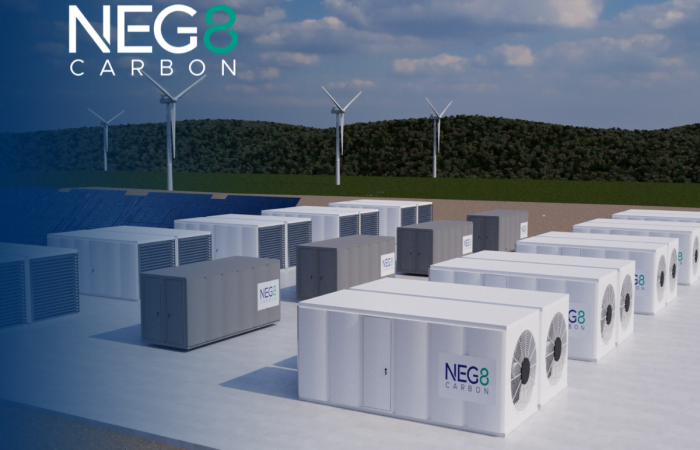What is Direct Air Capture and How Does It Work?
In our ongoing battle against climate change, we are constantly exploring innovative technologies to reduce the concentration of carbon dioxide (CO2 ) in the atmosphere. One such technology gaining attention is Direct Air Capture (DAC). But what exactly is DAC, and how does it work? If you’re new to this concept, you’re in the right place.
Direct air capture (DAC) technologies extract CO2 directly from the atmosphere at any location. Captured carbon dioxide can be permanently stored in underground geologic formation or be put to productive use in the manufacture of fuels, building materials, enhanced oil recovery and more.
Air Capture: The process begins with the extraction of air from the environment. Large fans draw in atmospheric air, which contains about 0.04% CO2 by volume, along with other gases.
CO2 Adsorption: The captured air is then passed through/over sorbent material which selectively binds with the CO2. This step is critical in separating CO2 from the rest of the air.
Separation: After adsorbing the CO2, the sorbent material undergoes a separation process. A vacuum is applied and then heat allows the pure CO2 to be extracted from the sorbent material. Undertaking the separation step with a low energy requirement is crucial to the efficiency and scale up potential of DAC. Large amounts of pure water are also separated as part of this stage. This water is a valuable commodity that can be used in industry.
Permanent Storage: Clean Air Task Force’s report highlights that there is ample potential to develop CO2 storage capacity in Europe to use carbon capture and storage:
- Europe has enough potential storage capacity to deal with projected rates of CO2 capture for at least 500 years.
- Over two thirds of European countries have enough capacity to store at least 100 years of their own captured industrial emissions.
There are several established routes that we could use for storing or utilizing the CO2 captured through DAC:
- ocean storage in deep oceans to dilute into the sea water;
- geological storage: in oil and gas reservoirs, deep saline formations, and un-mineable coal beds;
- mineralization: CO2 is converted into a solid form through a process called mineral carbonation and stored virtually permanently.
NEG8 Carbon will utilize Direct Air Capture & Mineralization (DAC+M). The CO2 will be mineralized in basalt rock formations during a process where carbon dioxide is dissolved in water and interacts with reactive rock formations, such as basalts, to form stable minerals providing a permanent and safe carbon sink.
Utilization: Captured carbon can re-used in new chemical, industrial or biological applications. CO2 reuse does not replace storage, as depending on the applications it could eventually return into the atmosphere after it has been used.
Combating Climate Change
Direct Air Capture is a promising technology with the potential to help us combat climate change. It complements other efforts to reduce CO2 emissions and can play a crucial role in achieving our climate goals. While DAC is still relatively expensive and energy-intensive compared to other carbon reduction methods, ongoing research and development are expected to make it more efficient and cost-effective in the coming years.
As we continue to seek innovative solutions to the climate crisis, Direct Air Capture is a technology that holds immense promise. By actively removing CO2 from the atmosphere, it can help us mitigate the effects of climate change and build a more sustainable future.
About NEG8 Carbon
Following investment in 2021, the team at NEG8 Carbon have started to commercialize our technology by producing a proof-of-concept prototype 1.2 tonnes CO2/annum carbon capture unit which was validated in early 2023. Our first capture and storage (DAC+S) pilot project will have a capacity of 400 tonnes CO2 /annum will be launched in 2024. After this our modular solution will be rapidly deployed in large DAC farms across the world.
A recent Intergovernmental Panel on Climate Change (IPCC) report – Climate Change 2022: Mitigation of Climate Change highlights the key role that Direct Air Capture (DAC) will have in limiting warming to 1.5 °C. It estimates that DAC will be required to remove up to 310 billion tonnes of CO2 from the atmosphere between now and 2100. This will require enormous investment into DAC technology.
NEG8 Carbon is working hard to make the widespread adoption of DAC a reality through our modular ‘plug and play’ carbon capture units. The units have a small footprint and can be located virtually anywhere on the planet.
By 2035, NEG8 Carbon intends to install 25,000 NEG8 Carbon System units globally, collecting 10 million tons of CO2 annually. With a global goal of capturing 100 million tonnes of CO2 per year by 2040 and increasing this over the following decade to 1 billion tonnes per year.

